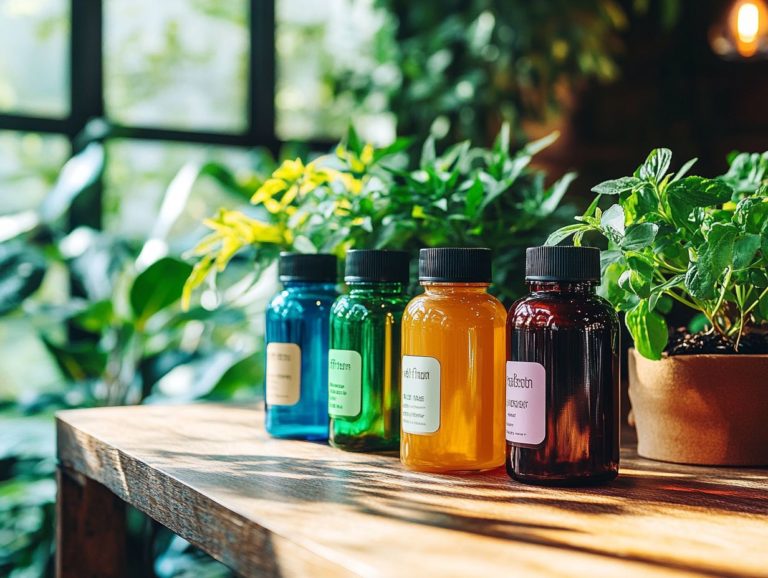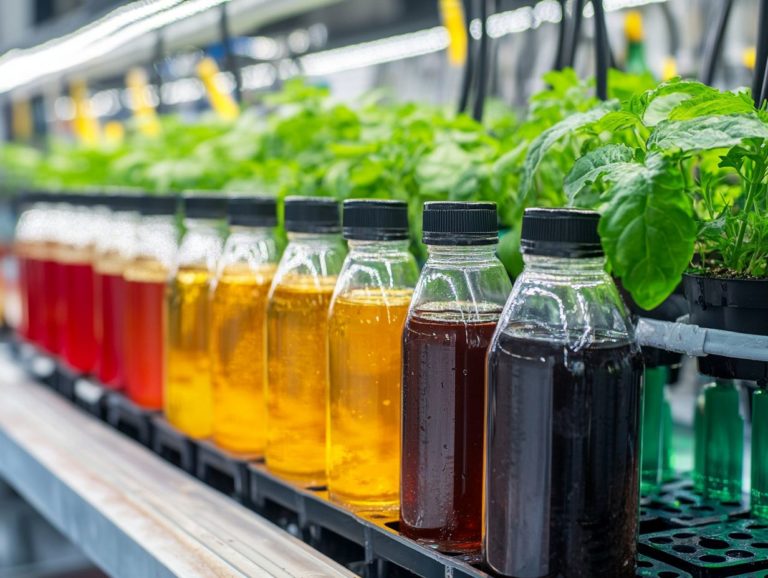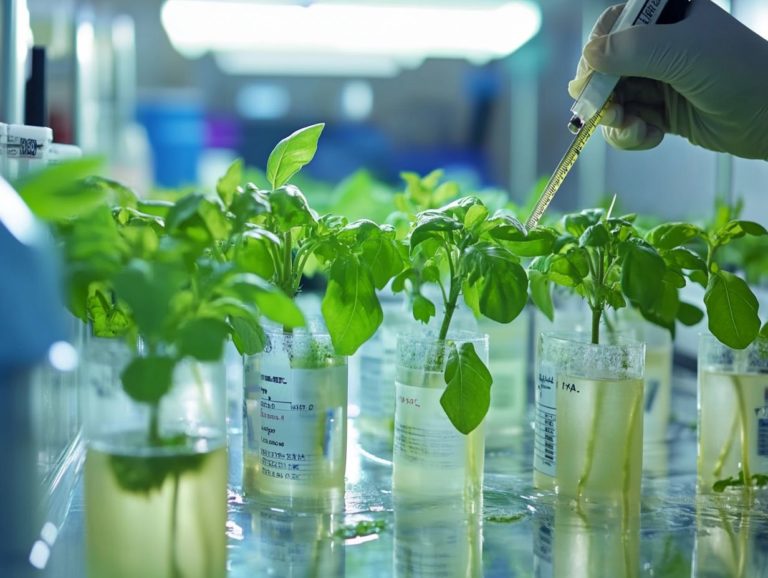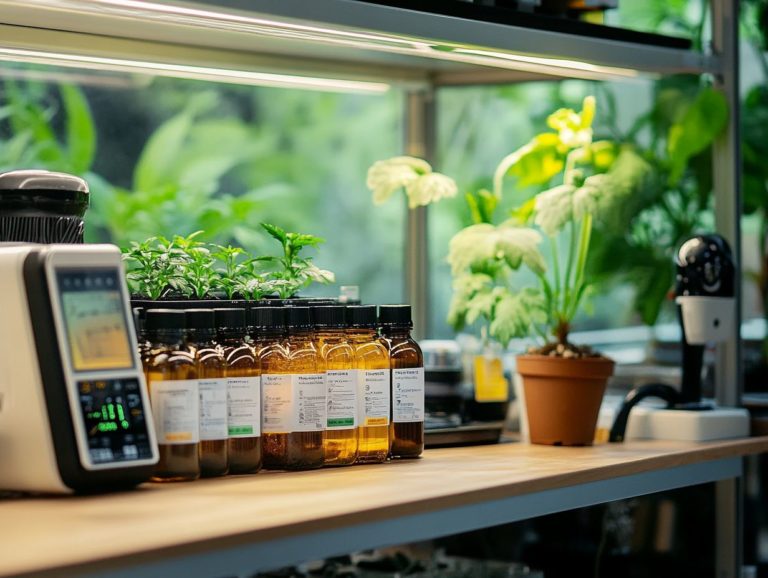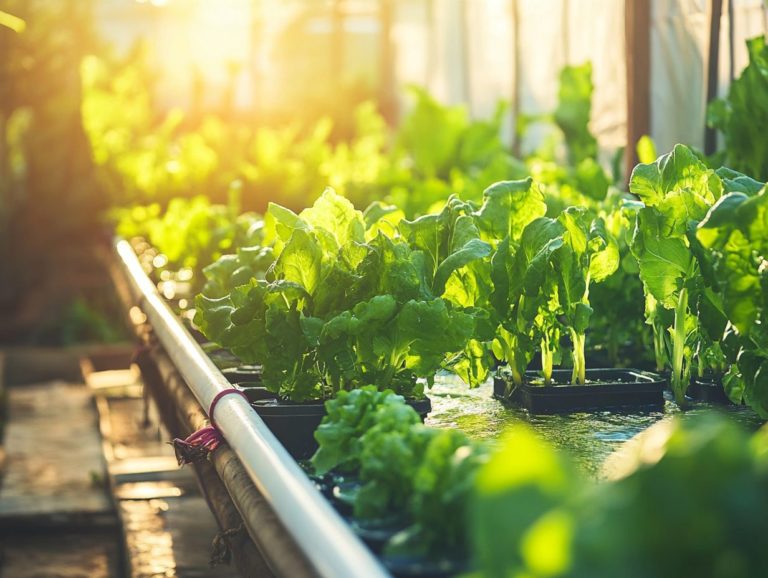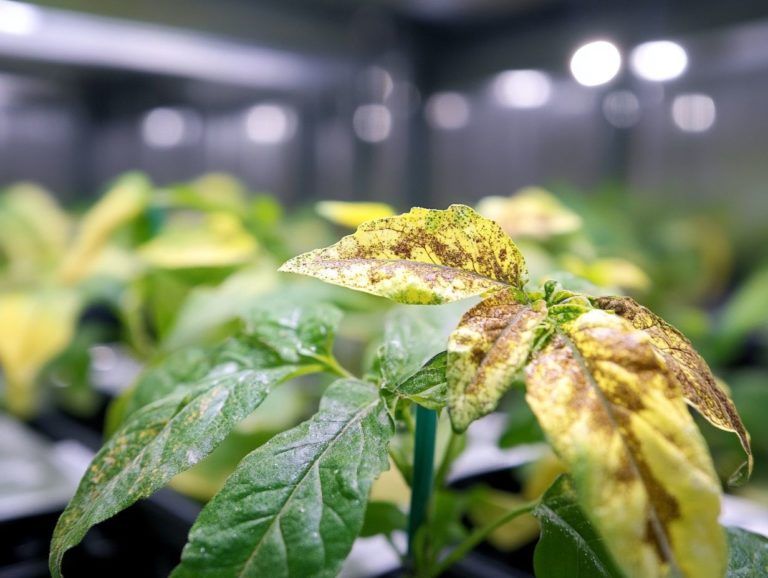How to Choose the Right Nutrient Solution
Contents
Choosing the Right Nutrient Solution for Hydroponics
Choosing the right nutrient solution can transform your gardening experience. You will enjoy vibrant and healthy plants.
Let’s jump into the exciting world of nutrient solutions! This guide explores different types available and the key factors to consider.
Assess your plants’ specific needs, water quality, and budget. This guide simplifies your decision-making process.
You will also find effective tips for maximizing your chosen nutrient solution. Whether you are an experienced gardener or starting your green journey, this guide helps you cultivate success in hydroponic gardening.
Key Takeaways:

- Consider plant needs, water quality, and budget when choosing a nutrient solution.
- Research and compare brands. Read labels and understand ingredients to evaluate nutrient solution options.
- Maximize effectiveness by using proper mixing and application techniques. Adjust nutrient levels and combine with other growing methods.
Understanding Nutrient Solutions
Understanding nutrient solutions is crucial if you are venturing into hydroponics. They ensure the success of your hydro gardens and hydroponic systems.
These solutions deliver vital elements like nitrogen, phosphorus, potassium, calcium, and magnesium. These nutrients are essential for plant growth and vitality.
By mastering nutrient solutions, you can optimize your hydroponic systems. This approach leads to sustainable agricultural practices and maximizes your crop yields.
What are Nutrient Solutions?
Nutrient solutions are carefully made liquids that deliver essential minerals and nutrients for plant growth in hydroponic systems. They eliminate the need for soil.
These solutions typically include complete fertilizers with a balanced mix of macronutrients and micronutrients. This ensures maximum absorption for your plants.
Unlike traditional fertilizers that rely on soil for slow nutrient release, these solutions allow for immediate absorption. You can fine-tune the nutrient concentrations based on your plants’ growth stages.
This custom approach not only optimizes plant health but also boosts yields. Understanding how nutrients interact helps prevent deficiencies or toxicities.
Types of Nutrient Solutions
You will find various nutrient solutions for hydroponics, each made to meet specific plant needs. Common options include calcium nitrate, magnesium sulfate, and potassium nitrate.
These solutions ensure essential macronutrients and micronutrients are delivered effectively. Advanced nutrient blends are available for high-performance crops like cannabis, tomatoes, and lettuce.
These specialized formulations balance secondary nutrients and vital micronutrients like iron, manganese, and zinc. Addressing each crop’s unique needs enhances yield and quality.
For example, cannabis thrives with specific nitrogen and phosphorus ratios during flowering, while tomatoes benefit from potassium for fruit development. Understanding these details helps you implement effective strategies for healthy plants and great harvests.
Factors to Consider When Choosing a Nutrient Solution
When choosing a nutrient solution for your hydroponic system, consider several factors that greatly influence plant growth and yield. Take into account the specific nutrient requirements based on the plants you re cultivating, the quality of the water you ll be using, the necessary pH levels for optimal nutrient absorption, and your budget for purchasing fertilizers and nutrient solutions.
Each of these elements plays a crucial role in ensuring your hydroponic garden thrives and achieves high nutrient efficiency.
Plant Needs and Growth Stage
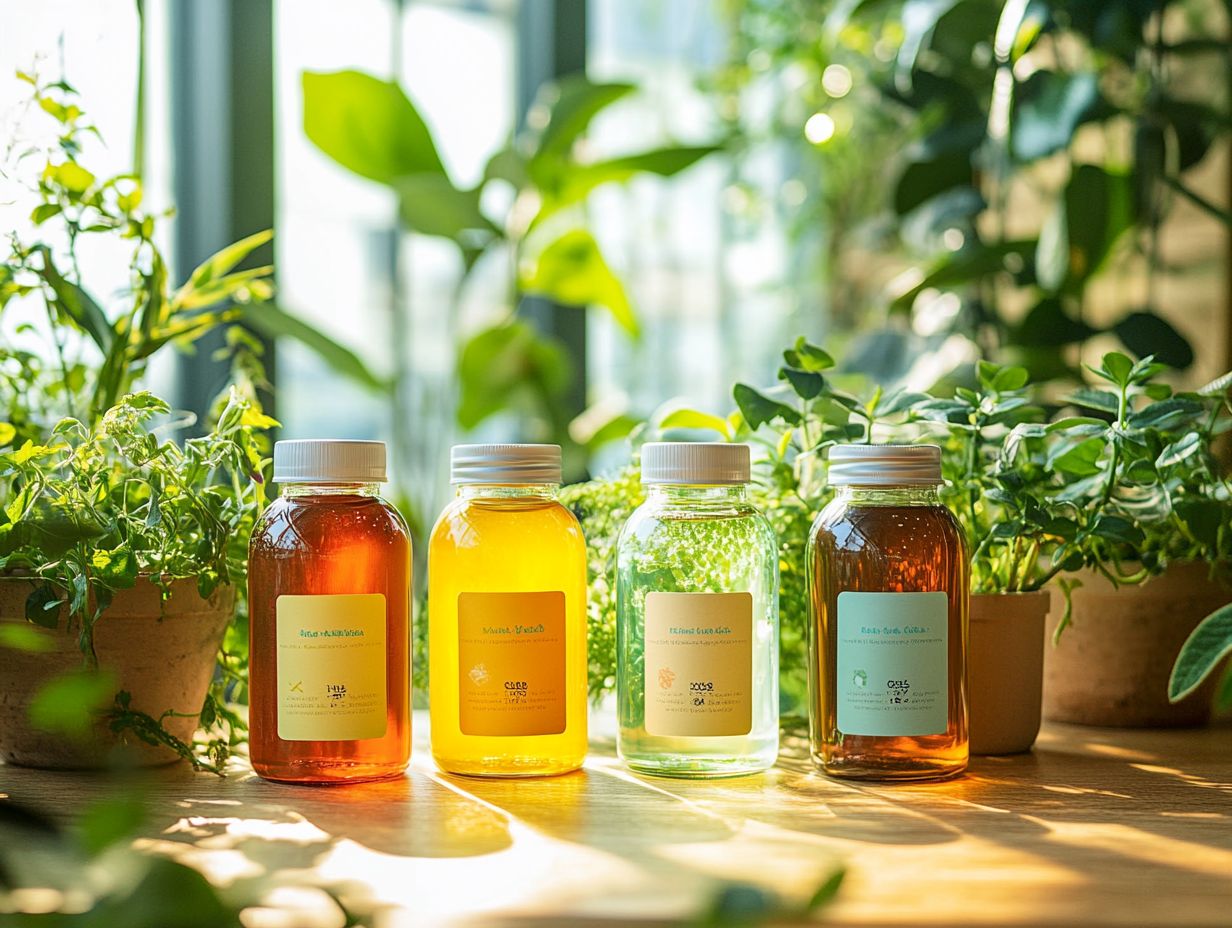
Understanding the needs and growth stages of your plants is essential when selecting nutrient solutions. Different plants have unique nutrient needs throughout their lifecycle. For example, cannabis, tomatoes, and lettuce each have distinct nitrogen needs at different stages.
A well-formulated nutrient solution prevents deficiencies and promotes vigorous growth. Young tomato plants thrive with higher phosphorus levels to support robust root development. As they mature, they need more potassium for fruit production. Similarly, cannabis plants in their vegetative stage flourish with added nitrogen for lush foliage. When they transition to flowering, it’s crucial to increase phosphorus and potassium levels. To learn more about maintaining nutrient balance, check out this guide on preventing nutrient deficiencies in hydroponics.
By recognizing these specific nutrient timing needs, you enhance your plants’ health and maximize your yield. This highlights the importance of customized nutrient solutions tailored to the growth stages of each species.
Water Quality and pH Levels
Water quality and pH levels significantly impact nutrient uptake in your hydroponic system, influencing how effectively plants absorb essential minerals. Maintaining optimal pH levels, typically between 5.5 and 6.5, ensures that nutrients are available for plants to use. Regularly testing water quality helps you make necessary pH adjustments to enhance your plants’ health and vitality.
For precise readings, use pH test strips or electronic meters. Adjusting with pH up or down solutions creates an environment that fosters optimal nutrient absorption. Monitoring nutrient concentration, measured by electrical conductivity, helps maintain ideal growing conditions.
Budget and Availability
Budget considerations and the availability of nutrient solutions are vital when selecting fertilizers for your hydroponic systems. A well-crafted fertilizer program should align with your financial constraints while ensuring access to high-quality nutrient solutions tailored to your plants’ specific needs.
Navigating the balance between cost and effectiveness is essential for an optimal growth environment. Evaluating various sourcing options uncovers cost-effective alternatives without sacrificing quality.
Exploring bulk purchasing, local suppliers, and organic options can provide savings while ensuring your plants receive essential nutrients. Consider the long-term impact of your nutrient choices on crop yield and health.
A sustainable fertilizer program boosts plant vitality and supports your bottom line, fostering harmony between budgetary limitations and agricultural success in your hydro-gardens.
How to Evaluate Nutrient Solution Options
Evaluating nutrient solution options is crucial for selecting the finest products for your hydroponic systems. This process requires you to meticulously examine labels and gain a clear understanding of the ingredients and formulations of different nutrient solutions.
Thorough research and comparison of brands will help you ensure the quality and effectiveness of your choices.
Reading Labels and Understanding Ingredients
Reading labels and fully grasping the ingredients in nutrient solutions is essential for you as a grower. This knowledge enables you to determine whether a product meets your crops’ specific needs.
Look for key components like complete soluble fertilizers that provide a balanced ratio of essential nutrients, including vital micronutrients crucial for plant health.
To effectively interpret complete fertilizers, it s important to familiarize yourself with both main nutrients, specifically nitrogen, phosphorus, and potassium, and essential micronutrients, including iron and manganese.
Main nutrients are fundamental for growth, influencing robust root development and bountiful yields. Micronutrients, while required in smaller amounts, play a significant role in enzymatic functions, nutrient uptake, and chlorophyll synthesis.
For example, products rich in calcium can enhance cell wall integrity. Those abundant in magnesium can boost photosynthesis, ultimately leading to healthier and more resilient plants.
By understanding the significance of these ingredients, you can tailor your nutrient solutions for optimal crop performance and hydroponic growth.
Researching and Comparing Brands
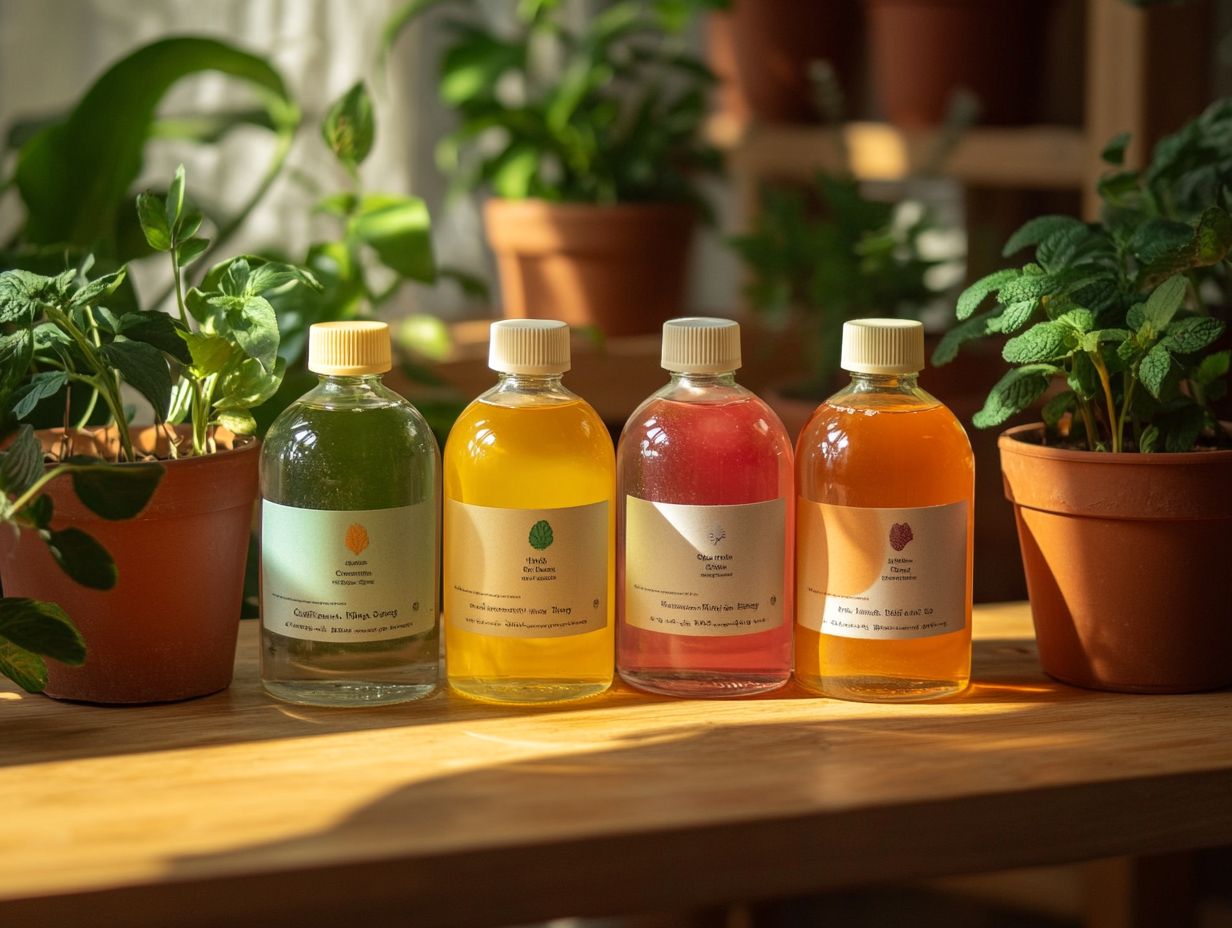
Researching and comparing brands of nutrient solutions is essential for hydroponic growers like you. This ensures quality and compatibility within your systems.
By examining the reputation of various brands and their formulations, you’ll pinpoint the best options tailored for your specific crop types, such as cannabis, tomatoes, and lettuce.
Dive into exciting customer reviews and expert opinions, which examine the nutrients in leaves to gauge plant health. This can illuminate the efficacy and reliability of different products.
Consider how these nutrient solutions interact with one another, as compatibility can greatly influence the health and growth of your plants. Nutrient imbalances can lead to deficiencies or toxicities, ultimately impacting your yields.
A thorough analysis of both user experiences and professional assessments will help you make the best choice for your plants today!
Tips for Maximizing Nutrient Solution Effectiveness
To maximize the effectiveness of nutrient solutions, adopt best practices in mixing and application. Proper timing and monitoring of nutrient levels will ensure your plants thrive.
Mastering Mixing: Essential Techniques for Hydroponic Success
Proper mixing and application techniques are essential for effective nutrient solutions in hydroponic systems. This ensures that nutrients are evenly distributed and easily absorbed by your plants.
To set the stage for robust growth, adhere to guidelines for mixing. Accurate measurement of nutrients according to the manufacturer’s instructions is crucial. For a deeper insight, refer to Understanding Hydroponic Nutrient Solutions. Dissolving each component thoroughly in water before combining them prevents clumping and guarantees uniformity in your solution.
Utilizing tools like pH meters (devices that measure acidity) and EC pens (devices that measure the electrical conductivity of your nutrient solution) enables real-time monitoring. Regular agitation of the mixture promotes consistent nutrient distribution.
Following these techniques supports plant vitality and creates a balanced growing environment an absolute must for anyone serious about hydroponics!
Tracking and Adjusting Nutrient Levels for Optimal Growth
Monitoring and adjusting nutrient levels is crucial for achieving optimal growth in hydroponic systems. This practice allows you to respond effectively to your plants’ changing needs.
Utilize nutrient testing methods including recipes, pH level checks, and electrical conductivity measurements to identify imbalances and ensure proper nutrient availability.
To guarantee that your plants receive the right nutrients at the right time, employ tools like TDS (total dissolved solids) meters, complete soluble fertilizers, and spectrophotometers. Additionally, you can learn how to make your own hydroponic nutrient mix. These instruments provide precise readings of nutrient concentrations, helping prevent deficiencies or toxicities.
Interpreting testing results accurately is essential. This may involve recalibrating nutrient solutions for efficiency or adjusting concentrations to maintain a balanced environment. For more insights on achieving this balance, check out how to mix hydroponic nutrients like a pro. Achieving this balance is crucial for thriving roots!
Enhancing Hydroponic Systems through Integration
Combining nutrient solutions with various growing methods can significantly enhance the effectiveness of your hydroponic systems and contribute to sustainable agriculture practices for urban farming.
Integrating advanced nutrients with techniques like aeroponics or aquaponics optimizes nutrient delivery and boosts crop yields. For example, aquaponics uses fish waste as a natural fertilizer, perfectly complementing precision nutrient management found in hydroponics.
Aeroponics allows roots to absorb moisture and nutrients in a mist format, promoting faster growth rates. Each method requires careful adaptation of nutrient solutions to ensure that plants receive the right balance of nutrients and environmental conditions.
Embracing integrated approaches not only promotes environmental stewardship through hydroponic gardening but also paves the way for more resilient agricultural systems.
Frequently Asked Questions
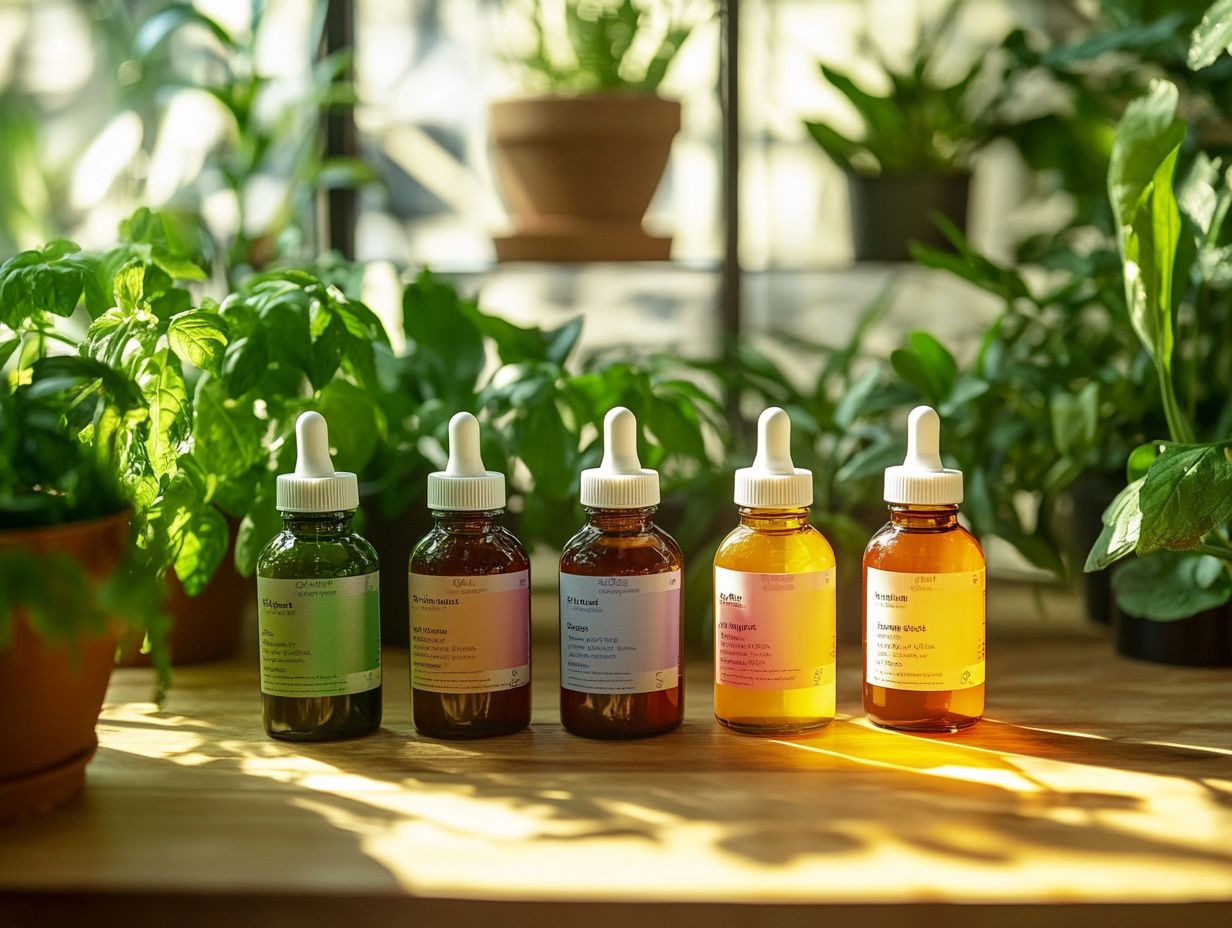
What is a nutrient solution?
A nutrient solution is a liquid mixture of essential minerals, such as nitrogen, phosphorus, and potassium, used to feed and nourish plants in hydroponic systems.
How do I know which nutrient solution is right for my plants?
To choose the right nutrient solution, start by identifying your plants’ needs. Then, select a solution that delivers those nutrients in the right amounts.
What factors should I consider when choosing a nutrient solution?
Consider the type of plants you are growing and their growth stage. Also, assess the water quality and nutrient levels in your growing medium.
Can I make my own nutrient solution?
You can make your own nutrient solution, but it’s not recommended for beginners. It s best to use commercial solutions designed for hydroponics.
How often should I change my nutrient solution?
Change your nutrient solution every 1-2 weeks. This frequency helps ensure your plants receive a fresh and balanced supply of nutrients.
Are all nutrient solutions the same?
No, nutrient solutions vary by brand and type. Read labels carefully to understand the nutrient ratios and usage instructions.

